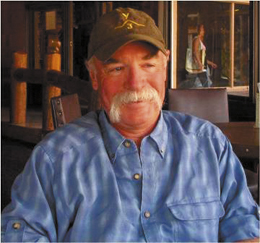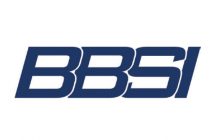 It’s never a good idea to have one client dominate your business but that is exactly what Bend Research did for ten years with Pfizer, their one and only client. In 2008 Pfizer redefined their relationship with Bend Research. Bend Research had to act quickly to define the assets left from their work with Pfizer and then build new clients.
It’s never a good idea to have one client dominate your business but that is exactly what Bend Research did for ten years with Pfizer, their one and only client. In 2008 Pfizer redefined their relationship with Bend Research. Bend Research had to act quickly to define the assets left from their work with Pfizer and then build new clients.
Four years later they are stronger than ever in terms of team, technology and clients. In 2008 they were doing $40 million with one client, today they are doing $55 million with 60-70 clients; they had 175 people on the team, today 300. I had the pleasure of interviewing Rod Ray, Bend Research CEO, who shared the journey of reengineering the company during the “Great Recession.”
CBN: What is Bend Research’s history?
RAY: Founded in 1975, the first 20 years we worked with all kinds of industries. Our clients were in oil, energy, military, NASA, all kinds of things. Then we started working with Pfizer and they took more and more of our capacity and more and more of our growth capacity. Finally we went exclusive with them because it was the best work and the most profitable. When you have just one client you have to have a good contract and we did. We had a contract that protected us with a turn down clause, a clause that gave us time and money to rebuild the business. The change occurred just two weeks after I had become CEO. At the time we were doing $40 million a year with Pfizer and had 175 people. We put a deal together with Pfizer that was very creative and benefited all parties. They gave us all the intellectual property patents and technology that we developed for them. We went into the market with them and we share the upside, a percentage of the licensing payments we get for the technology. We downsized to 130 people to help while we were rebuilding.
Once we had the deal secured with Pfizer we went into the market. The essence of our business development was to get out to pharmaceutical companies and explain what we do, our technologies and our people. The goal was to get them to give us a little project to do, then our people performed really well. Once we had credibility with the clients they gave us more business. The goal was to build several alliances as we had with Pfizer. Our team was successful!
CBN: When did you realize you were going to make it?
RAY: About Christmas of 2009 I realized we were going to save the company so my thoughts were “Now what?” I wanted us to quit thinking of surviving and start thinking about being a real company. Our management team wrote a business plan that assumed we would grow out ahead of demand, take risks and hire people ahead of demand. We would continue to develop our large alliances as well as work for little companies that have good single medicines. We’ve been working off of that plan for a year and a half and it’s worked. Today we have a mix of clients: big pharmaceutical companies like Merck, Bristol- Myers, Squibb and Pfizer as well as some little customers that have one drug. Basically we built $50 million in new business.
The main thing is that this restart’s success was a result of our people. Why would a company take on a new outsource if it wasn’t better than the ones they were working with before? All of our success has been because our people performed so well.
CBN: Most of the community knows of Bend Research but few know what you do. Could you explain in layman’s terms what it is Bend Research does?
RAY: The new drugs coming out of pharmaceutical companies are trickier molecules. The molecules are harder and harder to work with. That’s because they are more targeted to specific diseases. For example, a lot of the drugs brought forth don’t dissolve into the body, they go right through. So what we have is the technology to make them bio-available so they work when consumed. The drug company discovers the drug and we make the drug “druggable,” allowing it to go commercial. We have a bunch of really good scientists and engineers here that solve the problems that come to us from our drug company partners. We basically take a difficult drug and get it formulated, then make the supplies for clinical trials with people to advance the drug.
CBN: How would you describe your culture?
RAY: It’s different, it’s weird. Our culture is a fast-moving, risk-taking, really hard-core science and engineering problem-solving culture. We hire out of schools in Oregon, Washington, Colorado and really like kids out of Montana State; they come off rural environments, farms and ranches where they are used to getting things done. That’s the kind of people who succeed here. We have a lot of interns in our organization. Big numbers like 30, and then we hire out of that pool as we go forward. We are very involved in all the universities in the West to identify key kids in the schools.
CBN: What is new in the world of pharmaceuticals?
RAY: Most of our work so far has been in small molecules which are drugs synthetically made in labs. The drugs that are used for cancer and several other diseases are mostly made by cells and called bio-logics. They are big molecules and very expensive because they are made by cells from mammals, that’s the growing area in pharmaceuticals. The real issue is that they cost way more than the small molecules because they are made from living cells rather than chemistry. In this case we are working on how they are made. We work on ways to make them better and faster, cheaper and higher quality. Currently these drugs can cost $300,000 per year or $20,000 a shot, which those without insurance and the Third World countries cannot afford. One of the goals of the pharmaceutical companies is to make them more available to bigger markets, which is where we come in.
CBN: Are you working on a lot of cancer drugs?
RAY: We have a lot of cancer drugs in house as well as kidney drugs, a lot of heart medicines, cystic fibrosis drugs and malaria drugs. We work in all kinds of therapeutic areas.
CBN: What does the future look like for Bend Research?
RAY: We are getting a lot of pressure from our clients to do commercial manufacturing at smaller scales, that’s because a lot of the new drugs are not “block busters” (meaning hugely commercial) but for smaller market sizes. Since those drugs do have a smaller volume, a lot of our clients want us to get the commercial capabilities to make commercial supplies, that way there is oversight with our technology.
A lot of the new drugs need new technologies to make them work, which makes them trickier to make them commercial. Our customers want to have it done here to solve problems as they arise. It’s all about mitigating risks. What they don’t want to have happen is to have a manufacturing problem arise in is in the middle of launching a drug when the patient needs the drug.
That’s why they want us to do it. That’s one thing, commercial manufacturing, the other thing we are going to do is get back to our roots and start doing more fundamental R&D again. We get licensing revenues with patents which are beneficial but it also grows our people in the deep science and engineering culture. Those are our two big thrusts of development for the company.
We’ll get into non-pharmaceuticals things like batteries, wellness products like suntan lotions and oil and gas – ways to get oil out of the ground better. We have a bunch of skill sets here that can apply to a lot of areas outside of pharmaceuticals.
For example, the skill set we have here in terms of formulating drugs is applicable to making better batteries. It’s a diversification strategy. We are going to vertically integrate to do manufacturing and horizontally integrate to diversify. Both of those things make the company more solid for the future, plus it gives our people all these different experiences. It keeps their minds fresh with new approaches, which helps their work on drugs.
CBN: You personally and Bend Research participate greatly in the community. Would you like to share some of your efforts and the causes that are near and dear to you?
RAY: I’m on the foundation for OSU- Cascades. I’ve been advocating hard for that. Getting OSU to the next level is very important for the growth and future of Central Oregon as well as Bend Research. The reason OSU and COCC is important is about family. It’s key for recruiting. When interviewing, the first thing we are asked is “What is the educational system like.” These are educated people who value education. In my opinion there is no better way to develop our community than from the base of education. I’m recent past chair of Volunteers in Medicine, Bend Research contributes heavily to that cause. We also sponsor various science education activities like our Science Night for middle schoolers, and our Inventeriprise innovation contest. In addition we contribute to COCC, The High Desert Museum, Deschutes Children’s Foundation, Family Resource Center, Bend Science Station, Winterfest (kids science tent), 4-H, FAA, Bend- LaPine Schools and the Deschutes Library.
This was a fascinating interview for me, not just because I’m a bit of a medical science junkie but because this company didn’t subscribe to traditional business theory that no one client should dominate a business. They secured their position with a strong contract that gave them an exit strategy for when the relationship changed. When it did they put another contract together that created a return on investment for both parties to have a continued affiliation.
Rod Ray became CEO in the most precarious of times in terms of the business, but also the economy. His vision of team and talent saved the company and kept one our biggest employers in Central Oregon alive. The team’s talents succeeded in making it thrive.
If you have an interesting success story that may inspire our community of entrepreneurs please contact me at eueland@gmail.com. Elizabeth Ueland, Broker with Bend Premier Real Estate.




